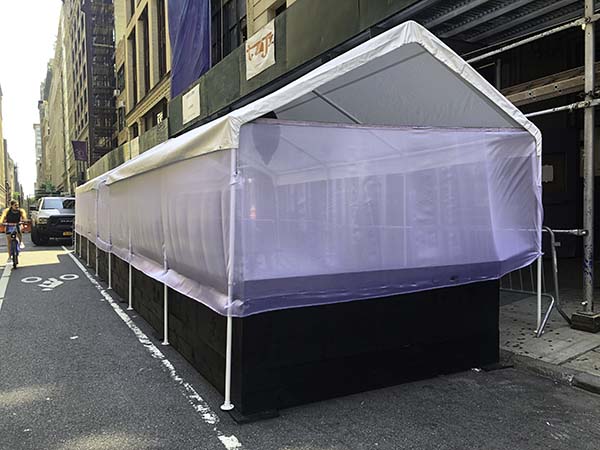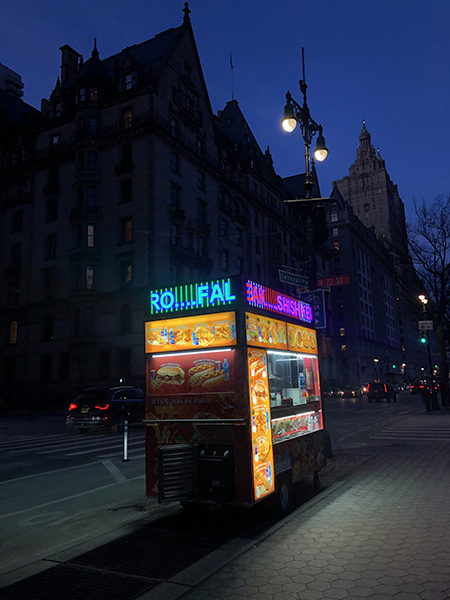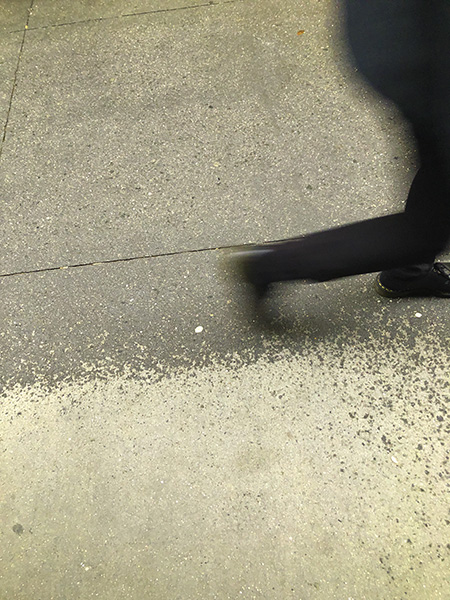The Do’s and Don’t’s of Art Licensing #1 – Ten Secrets to Success in Art Licensing
The Do’s and Don’t’s of Art Licensing:
Ten Secrets to Success in Art Licensing
by Lance J. Klass
President, Porterfield’s Fine Art Licensing
So much of the art that is submitted to us for review at Porterfield’s is just beautiful, and yet is completely unsuitable for licensing.
I know that sounds like a contradiction. How can beautiful art not appeal to potential licensees? Isn’t that what print and card and giftware and home decor companies really want to put on their products? In most cases the answer is a qualified “no” – it just isn’t that simple.
Over the years I’ve learned that there are basic rules or “secrets” to art licensing that will make some talented artists winners in licensing their art and reaping the potential financial rewards of doing so, while other artists who are perhaps equally talented will lose out completely because they just didn’t know the secrets of successful art licensing.
It all comes down to how you paint, what you paint, and how you present your art, and what I’m going to attempt to do in this article is to give you some very basic guidelines that will help you succeed in a very competitive business.
I call these guidelines “secrets” because they’re generally not known to most artists. I make no claim that they’re completely infallible because they’re not. And I don’t claim that they will always work, or that every successfully licensed artist has used them. In fact, there are many exceptions to these rules in which artists have achieved great success simply by breaking them.
But for the rest of us mortals, they’re sensible guidelines to what tends to work, and what doesn’t tend to work, in art licensing.
One final point before we dig into them: if you disagree with any of these rules – if they don’t suit what you do, what you want to do, and where you want to go with your art – that’s fine. After all, the very first rule in creating art is always to seek out your own path. While it may not lead you to financial success in licensing, doing what you most want to do can bring you enormous personal and emotional satisfaction as an artist and lead to a happy and fulfilling life.
But if you want to be successful in licensing your art to companies that need really good art for their retail consumer products, then let’s get into it.
Secret #1 – The Winning Format
By survey, the most acceptable format for artwork is a ratio of 3:4 in overall rectangular dimensions. That means working on a flat surface (canvas, board, paper) that is 9″ x 12″ or 18″ x 24″ or some other multiple of the basic 3:4 ratio.
Yes, some licensed art is round or even free-floating with no backgrounds and there are lots of tall, skinny prints on the market. But most round uses of art (plates, coasters, and the like) are cropped out of square or rectangular pieces of art. And for every set of tall, skinny prints there are 50 sets of prints in standard dimensions. Remember that if you paint it round or in some specialized shape, you’re limiting the uses of the art and also limiting the possibility of licensing your art.
Paint it in standard format and let your manufacturer licensee crop it for specific uses. Paint in the round or in odd shapes and there’s no way it can be expanded by the licensee to fit other uses. You can pretty much assume that using a standard 3:4 ratio will increase your chances of licensing art by a factor of 10.
Is a 3:4 ratio set in stone? Not at all. But if the image is large enough it can always be cropped down to a 5:7 or 4:5 ratio and will work fine, if your composition allows for that degree of flexibility on the part of art directors.
Secret #2 – Keep It Flat
You may like to sculpt or to create mixed-media three-dimensional pieces of art but if you do so, don’t expect them to be licensable. The vast majority of businesses that make their living by selling products with appealing art want two-dimensional images. That means oil, acrylic, gouache or watercolor on canvas, paper or board, and increasingly it means digital art as well.
Secret #3 – Keep It In Color
I’m regularly approached by artists who have created superb pen and ink or pencil drawings. While these may have been popular back in the days of fine art prints and etchings a hundred years ago, they are almost impossible to license nowadays. People want color, the more the better. They want density of color, good color saturation, pleasing color, rich color that draws the viewer into the art and elevates the spirit. Not black and white, no matter what your art instructor may have told you.
Secret #4 – Paint to the Edges
Yes, there are a ton of specialized uses for free-floating images that have no backgrounds. These include heat transfers for T-shirts and clothing, stickers, mugs, decorative borders on dinnerware, even jigsaw puzzles on occasion, but stand-alone images with no backgrounds are definitely in the minority. If a company does want to use one of your images with less background, they can always crop it out. But if you promote a shaped image to most companies, it’s very unlikely that they would spend the time building it out to the edges. Better to start with the complete image to the edges to give the image maximum utility.
What can be most appealing about a piece of art is its overall composition, how everything fits together into a compelling artistic statement. You may be the world’s best painter of dogs but if you paint them without backgrounds, you’re seriously limiting the potential uses of your art.
Some good examples of the use of overall design are obvious: Thomas Kinkade, who specialized in creating a mood all the way to the edges of an image, and Mary Engelbreit, who has created each piece of art as a total design unit. Each artist has been quite successful, and one of the most basic reasons for their success is their ability to design an overall and complete setting for the focus of their art. So remember, plan out your composition and take it all the way out to the edges of that 3:4 rectangle.
Secret #5 – Have a Clear and Compelling Focal Point
Studies in the advertising industry have shown that you have about 1/8 of a second to attract the eye of a viewer. Then the viewer looks elsewhere, only looking back if there is something compelling, some visual focal point, that draws the viewer’s eye back to the art. That isn’t much time to create interest in your art. It has to have immediately impact.
What happens once you’ve grabbed the person’s attention and brought it back to your art? First the viewer’s eye tends to focus on a key unit of your piece of art, then the eye flits very quickly around the image, coming back to the key focus of the art repeatedly. Studies of eye movement have shown that a viewer’s eyes can move half a dozen or more times a second as the viewer scans your painting and is drawn into it.
Studies have also shown that the best location for that key focal point is slightly above the dead center of the image. It’s less effective and compelling to have the focus of the image out on the side, or to have several major focal points in the image.
What do you do if you’re creating a landscape? The answer is simple: have an easy entryway for the eye. Use a road, a path, a street, a lawn, an open space – anything that will allow the viewer to go into where you’re taking them in the scene and become interested and involved in it.
Remember, your focal point is your eye-grabber if you really want to interest and involve the viewer in your art, and either license it or purchase it as a licensed product, so don’t finish a piece of art without it.
Secret #6 – Create Art in Sets of at least 4 Images
Artists often come to me with a broad smorgasbord of images, each one different in style, subject, size, format, design. That eclectic approach may work for selling originals in art galleries but it doesn’t work for many art licensees who want an artist’s work to have a distinctive “look” as part of a larger portfolio in which the particular artist’s hand and approach are recognizable.
Print companies in particular like to see sets of four or more images that obviously “fit” together. The same is true of many stationary, giftware, wall decor and home decor companies. They simply can’t design their products around one image, and if an image sells well they want to be able to add depth to their line. Plus, many people want to decorate their homes with sets of images rather than with single images.
Yes, calendar companies need 12 images for a calendar (some will want a 13th image for the cover) and card and needlework companies will occasionally pick up a stray image here and there, but most often companies want that set of four matching images. If they only pick one or two images from your collection, at least they know that your art portfolio has depth and internal integrity and consistency.
If you have many different ideas for different types of art or subject material, then do different sets of multiple images each. But remember to think in terms of collections of images that obviously fit together and your chances at licensing your art will be greatly improved.
Secret #7 – Be Wary of “Niche” Markets
I once received some wonderful images of German shepherds that an artist had painted. It was obvious to me from looking at her work that she loves these specific dogs and loves painting them. That’s fine, as far as it goes.
You see, her chosen subject matter falls in what we call a “niche” market because there’s a very limited number of consumers in America who buy products with images of German shepherds. True, there is a small market for this subject matter but it’s not mainstream and can’t be counted on if one is seeking both income and recognition from art licensing. They’re just too far away from the central heart of the consumer art market.
It’s sort of like going to a party and deciding beforehand that you just want to date guys who are exactly 5′ 7″, have brown hair, and wear loafers. Yes, they’re out there, but why limit your range of options if you don’t have to?
I happen to be a devotee of fantasy and science fiction art and there are some wonderful artists in this field. But that said, I have a devil of a time licensing such art to consumer-oriented companies because it just doesn’t appeal to the broad spectrum of American consumers.
Secret #8 – Paint What People Want to Look At Again and Again
It makes sense that if you want to license your art, then you improve your chances if you paint something that people want to look at not just once, but again and again. That means finding winning subject matter that will appeal to the great majority of art buyers.
How do you do that? One way is to go to your local mall or cruise the big box stores (Target, Walmart, Bed Bath, Marshall’s – you know the list), the bigger the better, and walk into every giftware store, every home furnishings store, every store that sells prints, posters, calendars, home decor, wall decor, kitchen and dining room tabletop products, stationary, cards, tins, jigsaw puzzles, decorative house and garden flags – any products that sell well because they carry compelling art. Check out the dollar stores too as they’re all vital parts of the market.
Look carefully around you at the major displays of products that carry art. A lot of it will be junk and you’ll want nothing to do with it. But a lot of the art will be pretty good – not art gallery or museum quality perhaps, but still pretty good. Do that and you’ll have an idea of what people are buying, or at least what licensees think people will buy. And that will give you some direction on subject matter, colors, style, format and a hundred other details that you can use as guides when next you put brush to canvas.
Is this “selling out”? That all depends on your viewpoint. If you want to paint in your barn and hope that someday the world will come to you, that’s fine. It’s worked for many great artists. But if you’re interested in producing art to license and hopefully make a good living at it, then give people images that they want to see again and again. How will you know? Show your art to a lot of people and look at their faces as they take their first look at your art. Be wary, though – friends will often tell you your art is wonderful, when it might not have a prayer on a product in a store where people don’t know you.
Secret #9 – Stay Generic
As much as you may like to paint your new grandson, your dog, or your house, don’t be surprised if no one outside your immediate family or circle of friends wants to look at your paintings, much less buy your art or license your work. After all, who wants a painting of your Uncle Harry on their wall? Would you want a painting of my Uncle Harry on your wall?
Stay generic. Animals, children, people, and pretty places seem to do best when they could be anyone or anywhere.
Secret #10 – Representational Art Sells Better than Abstracts
There’s lots of abstract art out there that is quite beautiful but most commercial art licensees want representational art. Remember that shopping mall survey I recommended above? See how many abstracts you come upon versus images that are clearly recognizable as something.
I’ve had to turn down a whole lot of artists who do beautiful abstracts just because they’re so very difficult to license. If I got very lucky I might find a print company that would want them but even so, would the prints or canvasses sell?
Some years ago my wife and I were at the famous Tate Gallery in London, at the same time they were running a huge exhibit of abstract works by a very famous artist. Walking through the halls of that exhibit we had plenty of time to look at the paintings because the exhibit hall was deserted. Leaving that “important” exhibition we walked twenty feet to another hall that was crowded with people. On the walls were the extremely realistic and beautiful works of English pre-Rafaelite painters. More people entered the room in the half hour we were there; few left. I learned something that day at the Tate, and you should learn it too.
Are there more secrets? Of course there are! You don’t really think I’d put them all in one article, do you?
– – – – – –
Lance J. Klass is President of Porterfield’s Fine Art Licensing, with many years of experience in the licensing field and expertise in promoting the works of artists seeking to increase their income and establish their names in the world of commercial, licensed art. If you’re interested in having Porterfield’s review your portfolio, please send representative samplings of your work in low-resolution digital files to Porterfield’s at art@porterfieldsfineart.com, and be sure to check out our site at http://www.porterfieldsfineart.com for the type of art we represent, and for other articles on the do’s and don’t’s of art licensing.
This article and its contents are copyrighted by Lance Klass, President of Porterfield’s Fine Art Licensing, and reproduction of this article in whole or in part is strictly forbidden without express written permission of the author and copyright holder.
















Care To Comment?